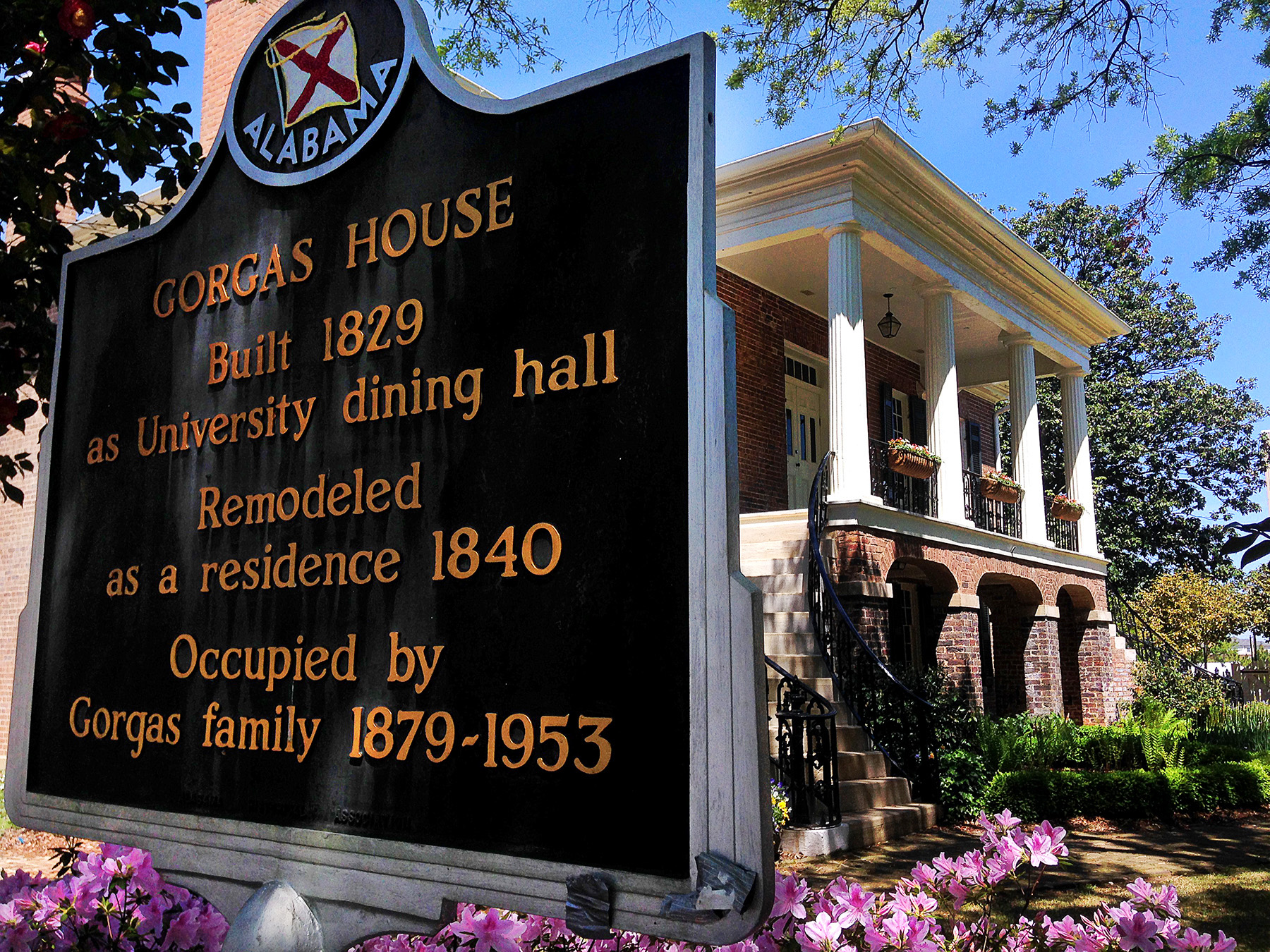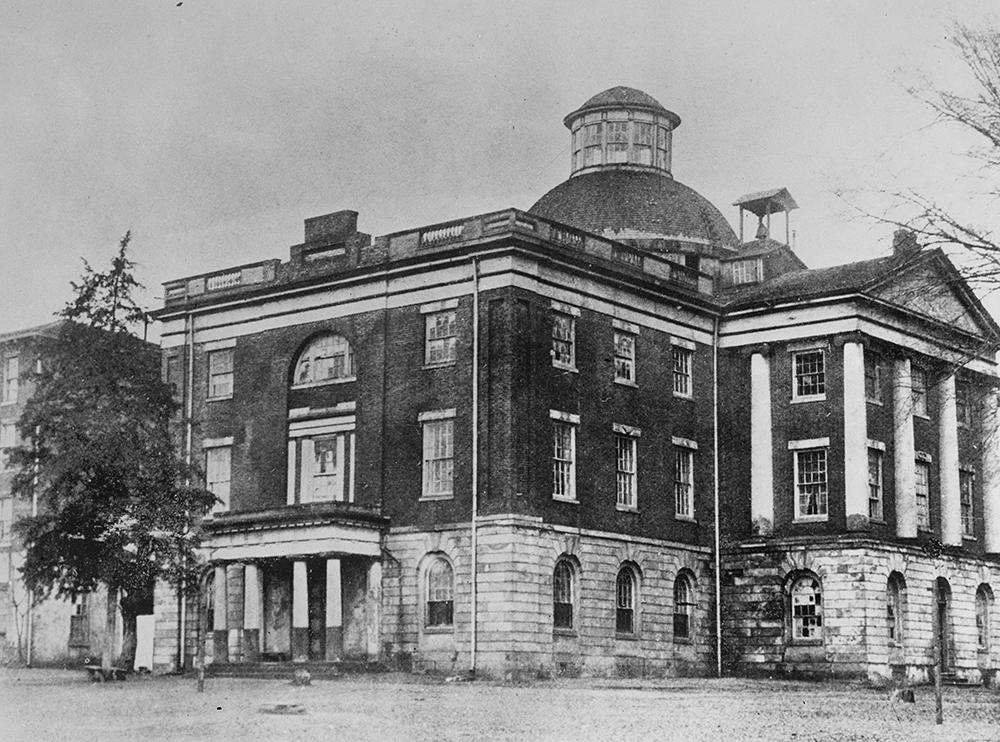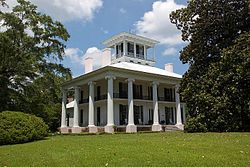City’s Crowning Gem
The Thomas Jefferson Hotel, located at 1631 2nd Avenue North in Birmingham, Alabama, was

built by the Union Realty Company in 1925. The architect for the project, David O. Whilldin, was a well-known architect who worked in both Tuscaloosa and Birmingham. The building is nineteen stories tall and held originally three hundred fifty rooms. It was built in the Renaissance Revival Style, which is seen in the terracotta exterior and the string course under the upper windows. It opened on September 17, 1929, forty-two days before the Wall Street stock market crash that led into the Depression. [i] [ii] The opening ceremony for the hotel consisted of a dinner and live band, with hundreds of people in attendance.[iii] During the years after its completion it was referred to as the “pride of Birmingham” and the Birmingham post called it “the city’s crowning gem”[iv]
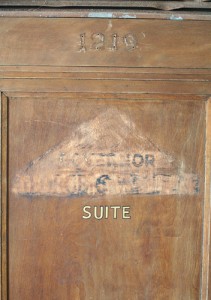
Upon entering the hotel, guests would enter a marble lobby, adjacent to a large dining room. Guests of the hotel during its prime included many well-known persons such as: President Herbert Hoover, President Calvin Coolidge, Bear Bryant, and Governor George Wallace, among many others. Bryant and Wallace each had their own suites at the hotel to be used when they were in Birmingham. [v] Many of the traveling sales persons that stayed at the Jefferson would rent two rooms, one that they would sleep in, and the other to meet with potential clients and display their products.[vi]
The architect, a Birmingham local named David Oliver Whilldin, designed the Thomas Jefferson Hotel for around two and a half million dollars. [vii] Whilldin designed over 400 buildings during his career. He mainly worked in Gadsden, Birmingham, and Tuscaloosa. He was born in Philadelphia, and attended the Drexel Institute as well as the University of Pennsylvania. Along with the Thomas Jefferson Hotel, he also designed the Tuscaloosa city hall, and the Bama Theater in Tuscaloosa. [viii] The hotel, as described by Bill Muellenbach who worked there as a bellboy in 1936, had elegant amenities along with a highly skilled chef who made the pecan pies that the hotel was known for. During Prohibition, Muellenbach remembers going to the local police station to buy “Pensacola Rye” for the guests. [ix] Another amenity offered to guests was the availability of insurance that would cover injuries or accidental deaths within twenty-four hours of checking out of the hotel.[x]
In 1972 the hotel changed management and was renamed to the Cabana Hotel. After functioning under that management for eleven years the hotel was shut down after being declared uninhabitable. The 200 residents, who had been paying monthly rent to live in the rooms, were forced to find new homes.[xi] In 2005 the hotel was bought by the Leer Company in Modesto California, who planned to turn the tower into upscale condominiums. However, in 2008 the building was foreclosed due to the Leer Company’s inability to acquire local funding for their project. It is listed in the National Registry of Historic Places; however, since 2008 the hotel has declined even more and in 2013 was named to Alabama’s Places in Peril list.[xii]
On August 7, 2013, Thomas Jefferson Tower Incorporated, a non-profit organization led by Matthew Sheets and Brian Beshara purchased the tower for one million dollars.[xiii] The new owners have plans to converts the building into an apartment complex, using the lower two floors for restaurant, retail and event spaces.[xiv] Beshara, a real-estate investor from Louisiana, plans to create about one hundred apartment units in the tower along with the addition of a pool on one of the outdoor terraces.[xv] The new owners plan to restore the mooring mast on top of the building, along with some of the ornate details on the interior of the tower. [xvi]
The Thomas Jefferson Tower was built to be used as a hotel. Hotels in the 1920’s were constructed in the era after World War One, a time of economic progress known as the jazz age. The 1920’s also saw a growth in the number of “luxury” hotels. It was an era in the traditional family-owned hotel tradition shifted to a modern industry, which would grow to become one of the largest industries in America. [xvii] Hotels are thought to have been an American creation during the rise of the modern era. In the late nineteenth to the early twentieth century, hotels became more frequent in almost every urban city. [xviii]
History of Hotels in Birmingham:
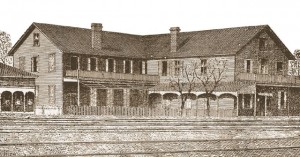
Birmingham’s first hotel (the Relay House) was built in 1871, construction was led by Col. James R. Powell. This hotel had two stories and thirty-seven rooms. It had modern features inside, such as gas lighting, and a brick oven for baking. Indoor water pipes were added in 1973 that pumped both warm and cold water. [xix] It was located near the city’s railroad station, thus was the ideal location for travelers to stop for the night. Along with being a hotel the Relay House was also the site of many social events and business meetings.
By the end of the nineteenth century, the people of Birmingham wanted a newer and more comfortable hotel in their city. The Caldwell and Morris hotels opened around 1890, and were more luxurious, with on-site restaurants and hand carved furniture. These two hotels were soon overshadowed by the even more ornate Tutwiler hotel, opened in 1914 on 20th street. The Tutwiler had over 300 rooms and grand public spaces on the lower floors. [xx] Almost twenty years after the completion of the Tutwiler, the Union Realty Company built and opened the Thomas Jefferson Hotel, adding to a long line of luxury hotels in Birmingham.
Architectural Style:

The Thomas Jefferson Tower is built in the Renaissance Revival Style. The style is a revival of the Italian Renaissance style. The Italian Renaissance, the “rebirth” of the Italian style, looked back at Greek and Roman styles of Antiquity as influences for their architecture. [xxi] The Renaissance Revival style is an adaptation of that antiquated style and thus shows many Classical influences.[xxii] The renaissance architecture was designed to portray the power and wealth associated with Classical ideas, and the Renaissance revival architecture aimed to portray the same thing. This style is exemplified by a flat roof that is surrounded by ornate cornices, as seen on the Thomas Jefferson Hotel. Also a staple of Renaissance revival style, the hotel is rectangular in its basic
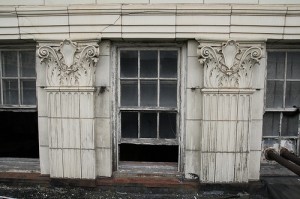
plan, and also features a balanced facade along with terracotta detailing on the exterior walls. The upper two floors are divided from the rest of the exterior wall by a string course and arched windows, both of which are key classical feature. The base of the hotel is topped by terraces on the second floor and highlighted by a canopy over the entrance. [xxiii] The Renaissance Revival style typically includes a rectangular floor plan and stone or masonry outer walls. The designs in Renaissance revival are often ornate and delicately detailed, especially in the cornices and string courses that draw attention to certain floors. The ornate lion-head decorated columns support terracotta ceilings in the main floor lobby reflect the attention to detail shown in the iron work on the exterior of the building. [xxiv]
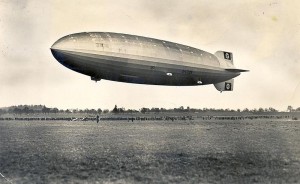
The Renaissance Revival style became popular in the United States in the early to mid-1900’s. [xxv] The style is sometimes divided into two sub-styles: Northern Italian Renaissance Revival and Florentine Revival. The Jefferson Tower is built in the Northern Italian Renaissance Revival style, as seen in the large arched windows on the lower two floors. [xxvi] The iron details of the building are influences of the Italianate style, which grew in popularity in Alabama starting in the 1850s. [xxvii] The hotel roof features a Zeppelin mooring mast[xxviii], an iron structure with a nose piece and other gears necessary to dock Zeppelins.[xxix] Zeppelins are rigid airships created by Germans in 1900 that were designed to be steerable balloons, which gained altitude by gas pressure in the canopy.[xxx] The Thomas Jefferson hotel built their mooring mast in hopes that Zeppelins would begin to gain popularity in Birmingham.[xxxi]
David Whilldin’s design for the tower, along with luxurious amenities and the high levels of customer service from the staff, led the Thomas Jefferson Hotel to be one of the grandest hotels in Birmingham in the early to mid-twentieth century. As it changed ownership throughout the rest of the twentieth century, it fell into disrepair. If all goes as planned the new owners will begin renovating the building in the spring of 2014, turning it into apartments, and restoring it to the greatness it once knew.
Bibliography
Barber, Dean. “Auction Brings No Buyer for Decaying Hotel.” The Birmingham News. September 16, 1987.
Barron , Richard . La Fayette Square Preservation Plan. Los Angeles : Los Angeles Department of Urban Planning, 2003.
Buchanan, Charles. Fading Ads of Birmingham. Charleston: History Press, 2012.
“Birmingham’s First Hotel.” Birmingham News, , sec. Looking Back, October 25, 1959.
Blumenson, John. Identifying American Architecture: A Pictorial Guide to the Styles and Terms, 1600- 1945 , W.W. Norton & Co. New York, 1977.
Bryant, Joseph. “Glory Days Long Gone for Thomas Jefferson Hotel.” Birmingham Business Journal. (2002).
Collier, V. Von . “The Empire State Mooring Mast – And How it Works!.” Popular Aviation, July 1931, 16.
Fletcher, Naaman. “Hotel Thomas Jefferson.” Whats Left of Birmingham. (retrieved April 10, 2014).
Gamble, Robert. Historic Architecture in Alabama: A Guide to Styles and Types, 1810-1930. Tuscaloosa: University Alabama Press, 2001.
Gebhard, Patricia. George Washington Smith: Architect of the Spanish Colonial Revival. Layton: Gibbs Smith, 2005, 2005.
Harris, Cyril. American Architecture: An Illustrated Encyclopedia. London: W. W. Norton & Company, 1998.
Lamonaca, Marianne. Grand Hotels of the Jazz Age: The Architecture of Schultze & Weaver. New York: Princeton Architectural Press, 2005.
Masich, Andrew E. Italian Renaissance Revival Style 1890 – 1930 . Harrisburg: Pennsylvania Historical & Museum Comission, “Common Building Types: Houses, public buildings, schools, government offices, churches.”
Rupinski, Patrick. “Hotel once Heralded as Cit’ys Crowning Gem.” Birmingham Post-Herald, July 15, 1981.
Sandoval-Strausz, A. K. Hotel: An American History. New Haven: Yale University Press, 2008.
Schneider, David. Thomas Jefferson Hotel Named to Alabama’s 2013 Places in Peril. Montgomery, AL: Places in Peril: Alabama Trust For Historical Preservation, 30 May 2013. PDF.
Shelby, Thomas. D.O. Whilldin: Alabama Architect. Birmingham: Birmingham Historical Society, 2009.
Stephenson, Charles, and Ian Palmer.Zeppelins: German airships 1900-40. Oxford: Osprey, 2004.
Thomas Jefferson Tower, LLC. 2012. “Grassroots Effort Underway to Restore Historic Hotel.” July 23, 2012, 2012.
Tomberlin, Michael. “Unveiled: Birmingham’s 20-story Thomas Jefferson Hotel renovation to begin this spring.” The Birmingham News, Evening editionJanuary 14, 2014.
Poe, Ryan. “Investors buy Thomas Jefferson Tower for $1M.”Birmingham Business Journal. (2013).
Poe, Ryan. “Plans for TJ Tower call for 100 units, retail space.”Birmingham Business Journal. (2014).
Notes:
[i] Charles Buchanan, Fading Ads of Birmingham, (Charleston: History Press, 2012), 112.
[ii] Alex Woolf, The Wall Street Crash, (London: Raintree Steck-Vaughn Publishers, 2002).
[iii] Buchanan, Fading Ads, 112.
[iv] Patrick Rupinski. “Hotel once Heralded as Cit’ys Crowning Gem.” Birmingham Post-Herald, (1981)
[v]Dean Barber. “Auction Brings No Buyer for Decaying Hotel.” Birmingham News, , sec. 12A, (1987).
[vi] Buchanan, Fading Ads, 112.
[vii] Buchanan, Fading Ads, 112.
[viii] Thomas Shelby, D.O. Whilldin: Alabama Architect, (Birmingham: Birmingham Historical Society, 2009).
[ix]Joseph Bryant , “Glory Days Long Gone for Thomas Jefferson HOtel,” Birmingham Business Journal(2002),
[x] Buchanan, Fading Ads, 112.
[xi] Buchanan, Fading Ads, 114.
[xii] David Schneider, ´Thomas Jefferson Hotel Named to Alabama’s 2013 Places in Peril,” Places in Peril, Montgomery: Alabama Trust For Historical Preservation, 2013.
[xiii] Ryan Poe, “Investors buy Thomas Jefferson Tower for $1M,” Birmingham Business Journal (2013).
[xiv] Thomas Jefferson Tower, LLC. 2012. “Grassroots Effort Underway to Restore Historic Hotel.” (Press Release: July 23, 2012)
[xv] Ryan Poe, “Plans for TJ Tower Call for 100 Units, Retail Space,” Birmingham Business Journal (2013).
[xvi] Tomberlin, Michael. “Unveiled: Birmingham’s 20-story Thomas Jefferson Hotel renovation to begin this spring.” The Birmingham News, 2014.
[xvii] Marianne Lamonaca, Grand Hotels of the Jazz Age: The Architecture of Schultze & Weaver, (New York : Princeton Architectural Press, 2005), 10.
[xviii] A. K. Sandoval-Strausz, Hotel: An American History, (New Haven: Yale University Press, 2008), 2-4.
[xix] “Birmingham’s First Hotel.” Birmingham News, , sec. Looking Back, October 25, 1959.
[xx] Buchanan, Fading Ads, 111.
[xxi] Patricia Gebhard. George Washington Smith: Architect of the Spanish Colonial Revival. (Layton: Gibbs Smith, 2005).
[xxii]Andrew E. Masich, Italian Renaissance Revival Style 1890 – 1930 . Harrisburg: Pennsylvania Historical & Museum Comission, “Common Building Types: Houses, public buildings, schools, government offices, churches.”
[xxiii]John Blumenson. Identifying American Architecture: A Pictorial Guide to the Styles and Terms, 1600- 1945 (New York: W.W. Norton & Co, 1977).
[xxiv] Gamble, Historic Architecture in Alabama: A Guide to Styles and Types, 1810-1930.
[xxv] Richard Barron , La Fayette Square Preservation Plan, (Los Angeles : Los Angeles Department of Urban Planning, 2003).
[xxvi] Cyril Harris, American Architecture: An Illustrated Encyclopedia, (London: W. W. Norton & Company, 1998). 186.
[xxvii] Robert Gamble . Historic Architecture in Alabama: A Guide to Styles and Types, 1810-1930. Tuscaloosa: University Alabama Press, 2001.
[xxviii] Buchanan, Fading Ads, 112.
[xxix] Von Collier, “The Empire State Mooring Mast – And How it Works!.” Popular Aviation, (July 1931), 16.
[xxx] CharlesStephenson,, and Ian Palmer.Zeppelins: German airships 1900-40. (Oxford: Osprey, 2004) 4.
[xxxi] Buchanan, Fading Ads, 112.

